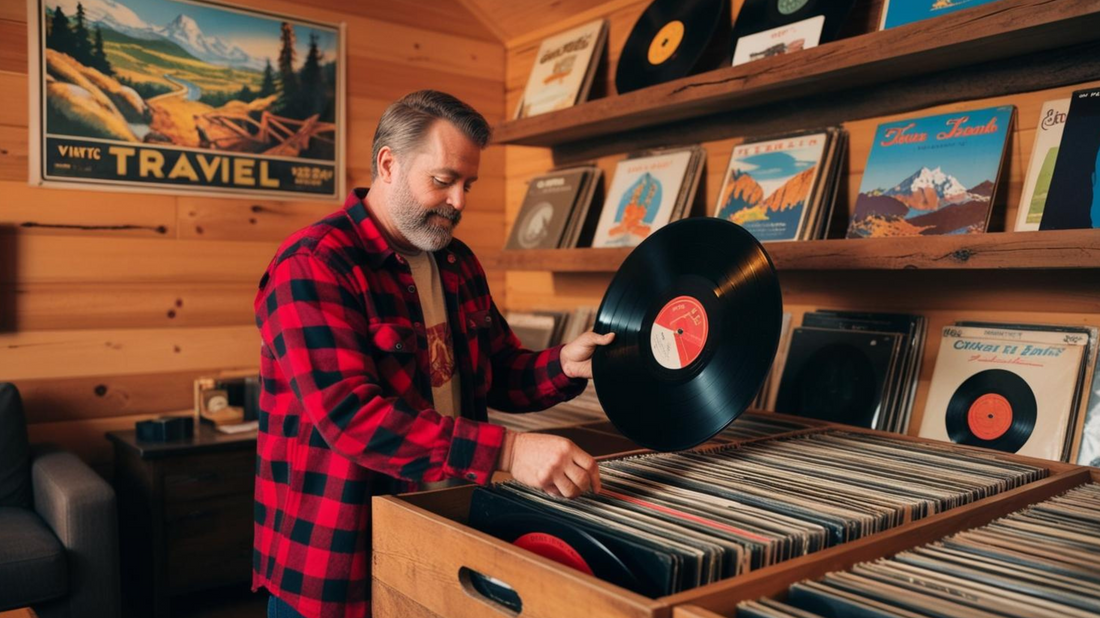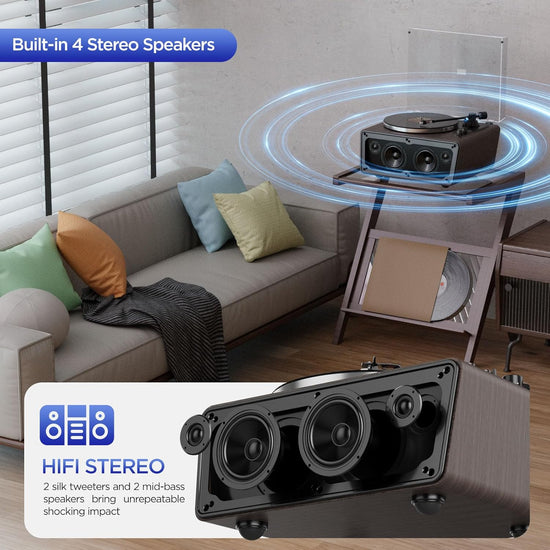Finding Your Sonic Truth
A definitive guide to choosing the perfect speakers for your record player. Unlock the full magic of vinyl by understanding the synergy of sound.
Discover MoreDeconstructing "Best" in Audio
The notion of "best" is subjective. It's about finding what's right for *you*, your system, and your space.
Sound Reproduction
Ideally, speakers convert electrical signals to sound waves with high fidelity, without adding or subtracting. But "accuracy" itself is debatable.
Subjectivity Matters
We listen with our ears and brains, shaped by experiences and biases. What's "detailed" to one might be "harsh" to another.
The Reality of Compromise
Every speaker design balances size, cost, and sonic traits. The "perfect" speaker for everyone doesn't exist, especially on a budget.
The Chain of Command: System Synergy
Speakers are only part of the equation. Your audio system is an interconnected chain; the final sound is only as good as its weakest link.
Amplifier Matching
Power output, impedance compatibility, and the amp's sonic signature greatly impact speaker sound. An underpowered amp can make speakers sound lifeless.
Phono Preamplifier
Crucial for vinyl, it handles RIAA equalization and signal amplification. Its quality significantly affects clarity and fidelity.
Key Takeaway: Ensure your turntable, cartridge, and phono preamp are of commensurate quality to your speakers. A balanced system is often best.
Decoding Speaker Specifications
Understanding specs helps, but numbers don't tell the whole story. Context is key, especially for vinyl.
Frequency Response (e.g., 50Hz - 20kHz ±3dB)
What it is: The range of frequencies a speaker can reproduce and how evenly. Wider and flatter is generally better.
Vinyl Reality: Smoothness of response is often more important than sheer extension to avoid accentuating vinyl's potential rumble or harsh highs.
Sensitivity (e.g., 88dB @ 1W/1m)
What it is: How loud a speaker plays with 1 watt of power at 1 meter. Higher is more efficient.
Vinyl Reality: Crucial for amplifier pairing. Higher sensitivity (90dB+) is better for low-powered amps. Sensitivity ≠ sound quality.
Impedance (e.g., 8 Ohms nominal)
What it is: Electrical resistance presented to the amplifier. Varies with frequency.
Vinyl Reality: Low minimum impedance can strain some amps. Ensure your amp can handle the speaker's load (typically 8-ohm is safe).
Driver Types & Enclosure
Drivers: Woofers (bass), midranges, tweeters (treble). Materials influence character.
Enclosures: Sealed (tight bass, less efficient) vs. Ported (deeper bass, more efficient). Choice depends on room, preference, and desired bass character. Good transient response is beneficial for vinyl.
Passive vs. Powered Speakers
A fundamental choice in your turntable setup. Neither is inherently "better"; it depends on your needs and priorities.
Passive Speakers
Require an external amplifier. Path: Turntable → Phono Preamp → Amplifier → Passive Speakers.
Pros:- Flexibility to choose/upgrade amp
- Potentially higher sound quality ceiling
- Modular system building
- More components and complexity
- Potentially higher overall cost
Choose if: You enjoy tinkering, own a good amp, plan long-term upgrades, or aim for top-tier fidelity.
Powered (Active) Speakers
Amplifiers are built-in. Many include phono preamps for direct turntable connection.
Pros:- Simplicity and convenience
- Optimized amp/driver matching
- Space-saving and often cost-effective
- Less flexibility for upgrades
- Potentially lower ultimate quality ceiling
- Repair can be more complex
Choose if: You prioritize simplicity, have limited space, want a plug-and-play solution, or are on a tighter budget.
Remember: Modern powered speakers can offer outstanding performance and convenience.
The "Vinyl Sound" Myth
Does vinyl's "warmth" mean you need "vintage-sounding" speakers? Not necessarily. Neutrality often reveals the recording's true character.
Nostalgia & Perception
The "vinyl sound" is partly from old mastering, equipment coloration, and nostalgia. "Warmth" can come from harmonic distortion or frequency nuances.
Speaker's Role
Neutral speakers reproduce what's on the record. "Voiced" speakers add their own color. Aiming for neutrality is often better, letting the vinyl's character shine.
A Practical Roadmap to Your "Best" Speakers
How to actually choose? It's a personal journey. Here are key steps and considerations.
Audition, Audition, Audition
The single most important step. Listen with your music, on a similar system, ideally in your room (in-home trials are invaluable).
Acknowledge Your Room
Room acoustics are a huge factor. Hard surfaces cause reflections; soft furnishings absorb sound. Consider basic treatments.
Budget Allocation
View holistically. A rough guide: similar budget portions for turntable/cartridge, amplification, and speakers.
Consider User Profiles:
The Beginner / Apartment Dweller
Powered speakers with built-in phono preamp often make sense. Simplicity, good sound for price, compact. (e.g., Kanto YU series, Audioengine A5+)

The Budding Audiophile (Passive)
Entry-level passive bookshelf speakers with a budget integrated amp (with phono stage). (e.g., Wharfedale Diamond, ELAC Debut, Q Acoustics 3000i series)

The Dedicated Listener (Mid-Tier+)
Higher-quality passive speakers (bookshelf/floorstanding), dedicated amp, external phono stage. Room acoustics are critical. (e.g., KEF, Bowers & Wilkins, Focal)

The Vintage Enthusiast
May seek restored vintage speakers or modern ones with "classic" voicing. Amp compatibility is key. (e.g., Advent, AR, KLH - vintage; some modern Wharfedale/JBL)

The Enduring Quest for Sonic Truth
Choosing speakers isn't about finding a universally acclaimed product. It's about understanding technology, acoustics, and your perception to define what sonic truth and listening pleasure mean to you.
Trust your ears, do your research, and enjoy the discovery. The right speakers will bring your records to life.
Explore XJ-HOME